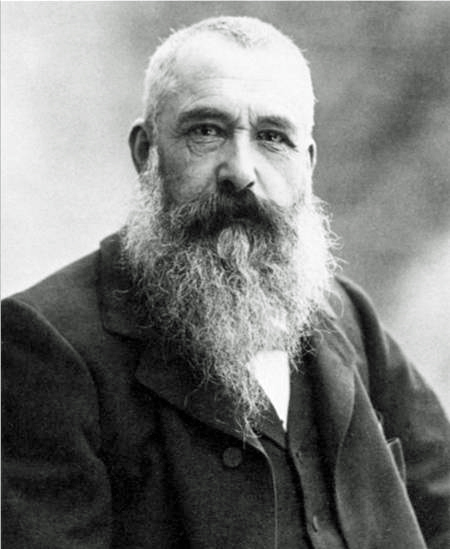 Édouard Manet |
Baudelaire and the Impressionist Revolution |
 Claude Monet |
|
|
Edgar Degas (1834-1917)
Self Portrait of Edgar Degas (1855)
Hilaire-Germain-Edgar Degas was a French artist famous for both his paintings and drawings. Like Manet, Caillebotte and Morisot, he was a member of the haute bourgeoisie. He is widely considered to be one of the founding fathers of Impressionism. Although Degas is frequently identified as an Impressionist, he differed from most of the Impressionists in that he never adopted their pecking style of brushwork nor did he customarily use the bright, dazzling colors, associated with that style. However, he did use a realistic manner of drawing and selected subjects that almost always involved scenes of modern life, particularly of the lower social classes. These characteristics tend to place him firmly in the Impressionist camp. He also participated in seven out of the eight Impressionist Exhibitions that were held from 1874 through 1886.
Throughout most of his life, Degas's paintings elicited both admiration and contempt from the artistic establishment. Early in his career, Degas had a number of paintings accepted for the Salon. These works received praise and demonstrated his success in conventional art. However, Degas soon joined the impressionist movement and rejected the Salon, just as the Salon and general public rejected the impressionists. His work came to be considered controversial, and Degas, as an impressionist, was ridiculed by many of the leading art critics of the time. However, towards the end of the impressionist era, Degas began to gain acceptance, and, by the time of his death in 1917, Degas was considered to be one of the most important French artists.
The Absinthe Drinker (1877)
This oil painting by Edgar Degas, entitled L’Absinthe, measures 36 X 26 inches and was completed in 1876. It was exhibited at the Third Impressionist Exhibition in 1877 and was the subject of much adverse criticism. Today, the painting hangs in the Musee d'Orsay.In the painting, a woman with sad and downcast eyes, is sitting at a table in front of a glass of absinthe. She seemingly is not even aware of the presence of the disheveled man resting his elbow on her table while smoking his pipe. The models for these unfortunate people were two close friends of Degas: the comedienne Ellen Andrée and the painter Marcelin Desboutin. Cafés were a fashionable part of Parisian life in the later half of the 19th century. They were important meeting places and sometimes functioned as centers of intellectual life. In particular, the Café de la Nouvelle Athène, near the Place Pigalle, was a frequent meeting place for impressionist painters. The overall decor, shown in the Degas painting, was almost certainly inspired by the decoration of this real life café. The painting evokes an aspect of the dark side of Parisian life. The pathetic solitude emanating from the scene is accentuated by the right-of-center location of the human figures, while in the left foreground there are only empty tables and unused newspapers. Alcoholism was then (as now) a social plague that particularly affected the working classes. Absinthe, a bitter drink made with an extract from the wormwood plant, reinforces the atmosphere of sadness and hopelessness communicated by the painting. At the time, this beverage was considered particularly obnoxious because of its purportedly adverse effects on the human nervous system. In 1914, the production and selling of absinthe was finally outlawed by the French government. One unusual aspect of the painting is the fact that the tables in the scene have no legs. The tabletops are like weightless mathematical planes; they just kind of hover in the air without any visible means of support. Obviously, Degas is playing a little joke on us!
|
|
|